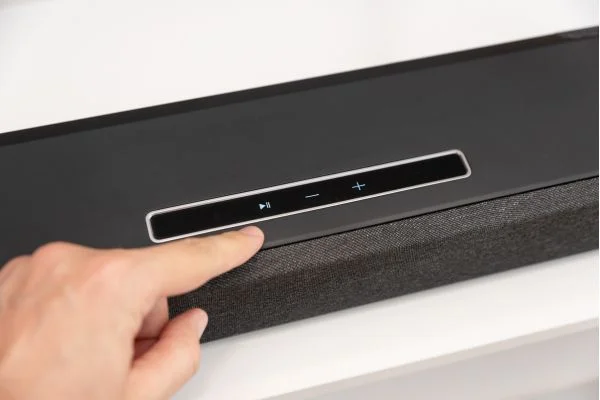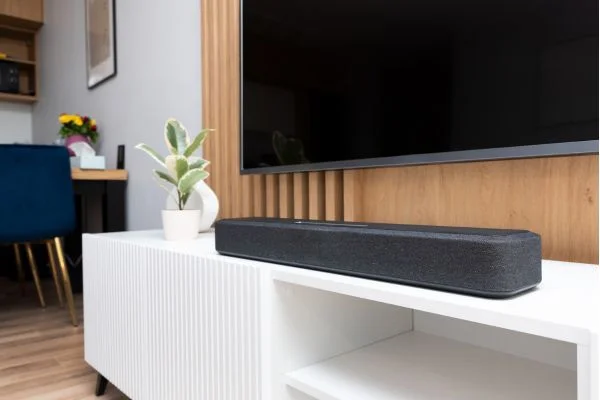The soundbar is a nifty little device that has transformed how we watch movies and listen to music. It elevates our audio experience and immerses us in the sonic universe of movie makers and music composers. Although most soundbars in the market come with a hefty price tag, they may not meet all our needs. If you’re into DIY, there’s a way around this! A few essential components, a little time, and a little creativity will help you build a passive soundbar that fits your needs and adds a touch of uniqueness. Read on to learn how to build a passive soundbar step by step.
How To Build A Passive Soundbar | Step By Step Procedure

Step 1: Choose Your Components
Before diving into the assembly process, it’s essential to understand the different components of building a passive soundbar. There are four main components: drivers (speakers), crossovers, enclosures, and wiring.
When selecting the driver, choose one compatible with your amplifier that meets your frequency response, impedance, and power handling requirements. The crossover divides the audio signal into frequencies and sends them to different drivers.
The enclosure should be designed to suit your preferred aesthetic, and the wiring should be done correctly to ensure that the soundbar functions to its maximum potential.
Step 2: Designing Your Soundbar
Once you’ve chosen your components, it’s time to design your soundbar. Putting some thought into the design of your soundbar will directly impact its sound quality.
You can follow pre-existing plans or create your own using software programs that simulate sound propagation. The soundbar’s size, shape, and materials will influence the resulting sound quality. Choose materials that are durable, acoustically transparent, and aesthetically pleasing.
Step 3: Assembly
It’s time to build your passive soundbar now that you have all your components and plans. Begin by following the enclosure design guidelines and proceed to cut and assemble the materials meticulously.
Once the enclosure is ready, mount the drivers and connect the crossover. Test the soundbar to see if it’s producing the desired sound quality. Suppose everything checks out. Wire and install the soundbar to your entertainment system.
Step 4: Fine-tune Your Soundbar
Fine-tuning your soundbar involves experiments with different positions, amplifiers, and placement locations. The soundbar’s location, on top of your entertainment system or below your TV, will influence its sound quality.
Additionally, tweaking the crossover to divide the frequencies more precisely will improve the soundbar’s quality. Experiment with different amplifier configurations to achieve the ideal sonic set-up for your home entertainment system. I think your confusion is no longer on “how to build a passive soundbar”.
Read more about Can You Use Blusound Amp To Run Passive Soundbar?
Can You Add an Active Sound Bar To the Passive System?
There’s usually no way to add an active soundbar to a passive speaker system. Active soundbars are designed as self-contained units with built-in amplifiers and signal processing specifically tailored to their internal speaker configuration. They are typically intended to be used as standalone audio solutions.
Passive speakers, however, need an external amplifier. External amplifiers or receivers are needed to drive the speakers since they don’t have built-in amplification. You can connect an active soundbar to a passive speaker system using adapters or cables, but it’s not recommended. Active soundbars have built-in amplifiers and signal processors designed to work with their internal speakers, so connecting them to passive speakers may result in poor sound quality, compatibility issues, or even damage.
If you have a passive speaker system and want to enhance your audio experience with a soundbar-like solution, consider dedicated soundbar options designed to work seamlessly with passive systems. These soundbars are designed explicitly for external amplifiers or receivers and provide a more integrated audio solution for passive speaker setups.
It is always recommended to consult with audio professionals or refer to the manufacturer’s guidelines and specifications when considering adding or integrating audio components to ensure compatibility and optimal performance.
Read more about How To Reset Onn Soundbar?
Why Passive Speakers Are Better Than Active?

The perception that passive speakers are inherently better than active speakers is subjective and depends on individual preferences and specific audio setups. However, passive speakers offer more flexibility in terms of customization and the ability to pair them with high-quality amplifiers.
Passive speakers also provide a more neutral sound reproduction since built-in amplification does not influence them. However, active speakers have advantages, such as a simplified setup and optimized integration between the amplifier and speaker components.
Ultimately, the choice between passive and active speakers depends on personal preference, specific requirements, and the desired audio experience.
Read more about What Size Soundbar For 65 Inch Tv?
Bottom Line
Now you know, How To Build A Passive Soundbar. Building a passive soundbar can seem intimidating, but it’s straightforward with the right components, design, and assembly. The best part about building a soundbar is that it’s a DIY project tailored to your needs and style. If you’re an audiophile and DIY enthusiast, try building your soundbar and elevate your home entertainment experience.

